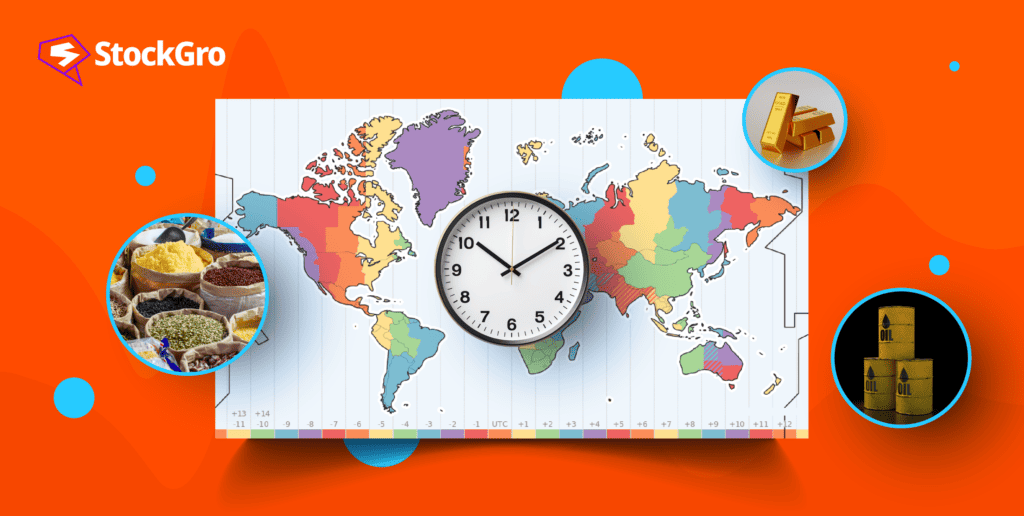
This often comes as a surprise to people starting out in commodity trading – the hours are different. They’re longer, and they stay open until pretty late at night. In this article, we will tell you everything there is to know about the timings of the commodity market and major recognised holidays.
You may also like: NSE considers extending trading hours
Commodity market hours
Like stock trading, commodities are traded only on weekdays, not weekends. Hence, you can only trade from Monday to Friday every week from 09:00 AM in the morning to 11:30 PM at night.
Here’s a table for your reference:
| Commodity Category | Trade start time (IST) | Trade end time (after start of daylight savings in the US) (IST) | Trade end time (after end of daylight savings in the US) (IST) |
| Internationally referenced non-agro commodities | 09:00 AM | 11:30 PM | 11:55 PM |
| Trade modification | – | 11:45 PM | 11:59 PM |
| Position limit | – | 11:45 PM | 11:59 PM |
Also Read: Understanding the concept of Commodity Transaction Tax (CTT)
Commodity market holidays
Here’s the list of trading holidays that are recognised every year. These days could fall on weekdays, which means you can’t trade on those days. Sometimes, they also fall during the weekends when trading is suspended anyway.
- Republic Day (26th January every year)
- Good Friday (variable during March or April, next year on Friday, 29 March 2024)
- Mahavir Jayanti (variable during March or April, next year on Sunday, 21st April 2024)
- International Labour Day (1st May every year)
- Independence Day (15th August every year)
- Mahatma Gandhi Jayanti (2nd October every year)
- Christmas (25th December every year)
Clearing holidays
Apart from regular holidays when trading is completely stopped, there are also clearing holidays when markets operate as usual, but banks don’t. This means that trades made on that day aren’t cleared immediately; they’re deferred till the next banking day.
Conclusion
Commodity markets stay open longer because commodities are impacted a lot by government policies, economic indicators, and natural disasters. When these changes occur in specific commodity-producing regions, the market has to allow time for participants to respond to these changes and for the market to price it in. That’s the biggest reason commodity markets stay open for longer.

